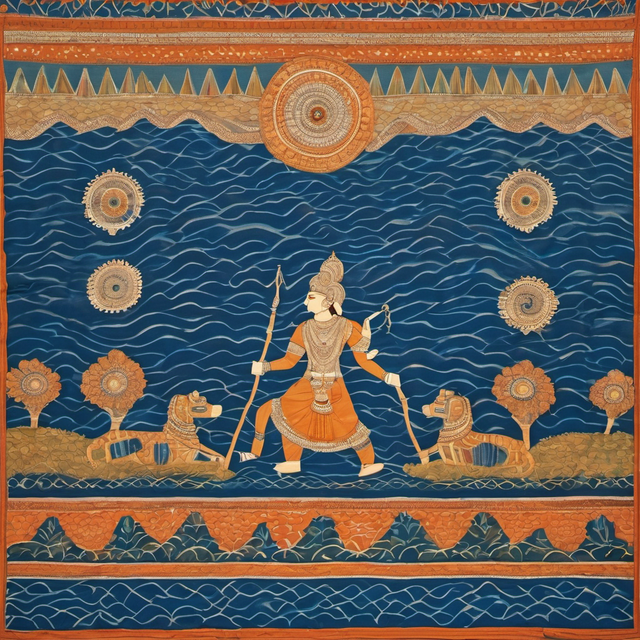
In the heart of old India, where realms rose and fell just like to recede and stream of the sacrosanct streams, a story unfurled that would shape the fate of an arrival washed in other worldliness. It was a period of lords and warriors, where the clash of swords resounded within the valleys, and the whispers of sages resounded within the thick forests.
The story starts within the kingdom of Agatha, a domain ruled by the powerful King Chandragupta Maurya. The capital, Pataliputra, stood as a confirmation to the greatness of the Mauryan Domain. Within the regal court, interest brewed like a covered up undercurrent underneath the calm outside.
At the heart of the dignified legislative issues was a youthful ruler named Ashoka, an energetic soul with a propensity for enterprise. He was not at all like his father, Chandragupta, who had built the domain through success and fighting. Ashoka, in any case, found comfort within the company of researchers and rationalists. His heart longed for a world where sympathy triumphed over conquest.
The turning point in Ashoka's life came amid the Fight of Ceiling. The war was brutal, and the waterways ran ruddy with the blood of thousands. Seeing the destruction and the anguish that war fashioned upon the individuals, Ashoka experienced a significant change. The once driven ruler risen as a ruler with a soul, frequented by the phantoms of his past conquests.
Driven by a recently discovered conviction, Ashoka set out to alter the course of history. He grasped the lessons of Buddhism, a reasoning that lectured non-violence and compassion. His proclamations, recorded on columns and rocks over the realm, announced devout resistance and social welfare. The Mauryan Domain, once known for its military might, got to be a reference point of peace and enlightenment.
As Ashoka's rule unfurled, it sent swells over the subcontinent. Within the southern promontory, the line thrived beneath the shrewd run of the show of Katakana. The , propelled by Ashoka's standards, cultivated a brilliant age of exchange and social trade. The old ports of Baruch and bustled with shippers from removed lands, bringing with them not as it were products but moreover thoughts that enhanced the embroidered artwork of Indian civilization.
Meanwhile, within the western field of the subcontinent, the extraordinary Mauryan bequest affected the arrival of the Aka Satraps. Lord Mahayana, a ruler known for his military ability, found motivation in Ashoka's vision of a concordant society. Beneath his rule, the Aka Satraps grasped a catholic ethos, cultivating a flourishing social amalgamation that resounded from the deserts of Maharashtra to the banks of the Indus.
As the winds of alter cleared over India, they come to the eastern wildernesses where the compelling Gupta Domain was developing. Chandragupta I, a relative of the first Mauryan heredity, looked for to join together the differing districts beneath the standard of social and mental resurgence. The Gupta period saw the thriving of craftsmanship, science, and writing, with researchers like Aryabhata making groundbreaking commitments to science and cosmology.
The Gupta Realm got to be a pot of imagination, drawing in writers, craftsmen, and logicians from each corner of the subcontinent. The Sanskrit dialect, as of now a vehicle of antiquated shrewdness, got to be a binding together drive, authoritative the different societies of India into a wealthy embroidered artwork of shared heritage.
Yet, indeed as domains rose and fell, the soul of India remained established in its towns and towns. The story of antiquated India was not kept to the terrific royal residences and royal courts. It resounded within the basic ceremonies of the common people, within the songs of meandering minstrels, and within the intelligence shared by older folks beneath the banyan trees.
The account of old India, woven with the strings of Ashoka's sympathy, the 's exchange, Mahayana's cosmopolitanism, and the Gupta's mental blooming, made a mosaic that risen above time. The swells of fate that started in Agatha streamed through the Gang etic fields, crossed the Cinthya ranges, and touched the shores of the southern seas.
As the centuries passed, India proceeded to advance, retaining and grasping the bunch impacts that came its way. The story of old India got to be a living confirmation to the flexibility of its individuals and the capacity to adjust without losing the pith of its social identity.
In the dusk of old times, as the subcontinent stood on the cusp of a modern time, the echoes of the past waited within the collective memory of its individuals. The embroidered artwork woven by the lords and rationalists, the warriors and writers, got to be the establishment upon which the longer term eras would construct their possess accounts, guaranteeing that the story of old India persevered like an undying adventure, whispered by the winds that cleared over its ageless
Appendix
If you like this post, tips of any amount are gladly accepted
My Tron Wallet: TGi92cVyEzY3iUDR2PqVYbjuJYW6Gd9bzQ

VOTE @nealsayan